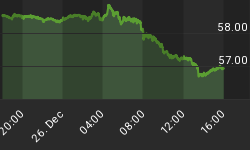Just after the HSBC Emerging Markets Index was released showing a marked slowdown in growth, HSBC Chief Economist Stephen King told CNBC news that Emerging Markets Hit a Bump in the Road. The is to be expected, with monetary tightening occurring in China (see BoomBustBlog China Focus: Interest Rates and BoomBustBlog China Focus: Inflation?), austerity measures being applied en masse in developed Europe (see The Pan-European Sovereign Debt Crisis) and the potential for a double dip in the US and UK. He also says that there is promise for the future, and I might even be inclined to agree with him, it's just that we need to get past the present first.
HSBC has a proprietary interest in the success of the emerging markets for they are highly geared into their growth and well being. With the developed nations of the west and Europe choking on debt overhang, the emerging markets are HSBC's key to growth, so it is very much the case that Mr. King is talking his book - which is not necessarily a bad thing, we just need to know all of the facts as they are laid before us.
I have just released our HSBC forensic analysis for the second quarter, and it is easily one of the most meaty reports that we have accomplished this year with 26 pages (Pro/Institutional versions) of fundamental, economic and macro analysis that truly picks apart both the inner workings and the future prospects of this bank. Below are some excerpts as applies to the topic of the emerging markets...



Below are the full forensic reports available for download to subscribers (click here to subscribe):
![]() HSBC 170610 Professional & Institutional (554.65 kB 2010-07-07 06:23:52)
HSBC 170610 Professional & Institutional (554.65 kB 2010-07-07 06:23:52)
![]() HSBC 170610 Retail (388.56 kB 2010-07-07 06:22:25)
HSBC 170610 Retail (388.56 kB 2010-07-07 06:22:25)
We have performed a decent amount of analysis on HSBC in the past as well, and it has served as a very profitable short position in 2008. I have decided to release the dated analysis to the public for free, it is available by clicking here: ![]() HSBC_Holdings_Report_04August2008 - pro (138.89 kB 2008-11-06 10:11:09)
HSBC_Holdings_Report_04August2008 - pro (138.89 kB 2008-11-06 10:11:09)

For anyone interested in the myriad risks and opportunities abound in the HSBC market's macro environment, I strongly suggest you review our sovereign contagion models (subscribers only):
![]() Sovereign Contagion Model - Pro & Institutional (1003.48 kB 2010-05-04 12:30:48)
Sovereign Contagion Model - Pro & Institutional (1003.48 kB 2010-05-04 12:30:48)
![]() Sovereign Contagion Model - Retail (961.43 kB 2010-05-04 12:32:46)
Sovereign Contagion Model - Retail (961.43 kB 2010-05-04 12:32:46)
The BoomBustBlog Sovereign Contagion Model
Nearly every MSM analysts roundup attempts to speculate on who may be next in the contagion. We believe we can provide the road map, and to date we have been quite accurate. Most analysis looks at gross claims between countries, which of course can be very illuminating, but also tends to leave out many salient points and important risks/exposures.

In order to derive more meaningful conclusions about the risk emanating from the cross border exposures, it is essential to closely scrutinize the geographical break down of the total exposure as well as the level of risk surrounding each component. We have therefore developed a Sovereign Contagion model which aims to quantify the amount of risk weighted foreign claims and contingent exposure for major developed countries including major European countries, the US, Japan and Asia major.
I. Summary of the methodology
- We have followed a bottom-up approach wherein we have first identified the countries/regions with high financial risk either owing to rising sovereign risk (ballooning government debt and fiscal deficit) or structural issues including remnants from the asset bubble collapse, declining GDP, rising unemployment, current account deficits, etc. For the purpose of our analysis, we have selected PIIGS, CEE, Middle East (UAE and Kuwait), China and closely related countries (Korea and Malaysia), the US and UK as the trigger points of the financial risk dissemination across the analysed developed countries.
- In order to quantify the financial risk emanating in the selected regions (trigger points), we looked into the probability of the risk event happening due to three factors - a) government default b) private sector default c) social unrest. The probabilities for each factor were arrived on the basis of a number of variables determining the relative weakness of the country. The aggregate risk event probability for each country (trigger point) is the average of the risk event probability due to the three factors.
- Foreign claims of the developed countries against the trigger point countries were taken as the relevant exposure. The exposures of each developed country were expressed as % of its respective GDP in order to build a relative scale for inter-country comparison.
- The risk event probability of the trigger point countries was multiplied by the respective exposure of the developed countries to arrive at the total risk weighted exposure of each developed country.
















